– “Okay, I reckon the hare gets fucked”
– “What? Proper fucked?”
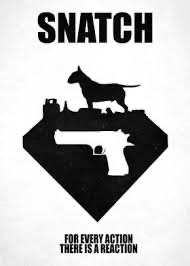
In Guy Ritchie’s comedic crime thriller Snatch, he uses this hare coursing scene to draw parallels between the animality of the dogs and the gangsters, whilst also simultaneously using the mise-en-scene to create a contrast between the agility of animals alongside the clumsiness of humans. Richie uses the animals in this scene to enhance these stereotypes, demonstrating the killer and survival instincts present in both animals and humans.
The dogs in this scene are presented as vicious and hungry as they bark and growl at the hare, and the gangsters are characterised in a similar way as they hunt and capture Tyrone. This comparison is heightened by the mise-en-scene and Richie’s zestful camerawork.
As the hare coursing begins Ritchie utilises slow-motion camerawork to enhance the dogs’ animalistic, feral nature and amplify the tension of the chase. By using slow-motion here, Richie is able to focus on the power of the dogs, capturing their detailed muscles and sharp teeth. The slow-motion captures these finite details and encourages the viewer to focus on the dogs innate killer instinct and vicious attributes. Similarly, slow-motion is used to capture the gangsters violently attacking Tyrone, homing in on their determined facials and dominating movements. The comparison of their animalistic nature is further enhanced by the high-speed editing and cutting back and forth between the two plotlines. The sharp cuts enhance the intensity of the chase and encourage viewers to feel the same sense of distress and disorientation that is presented on-screen creating a visceral experience. The editing also allows Richie to draw parallels between the intimidating nature of the hounds and the gangsters.
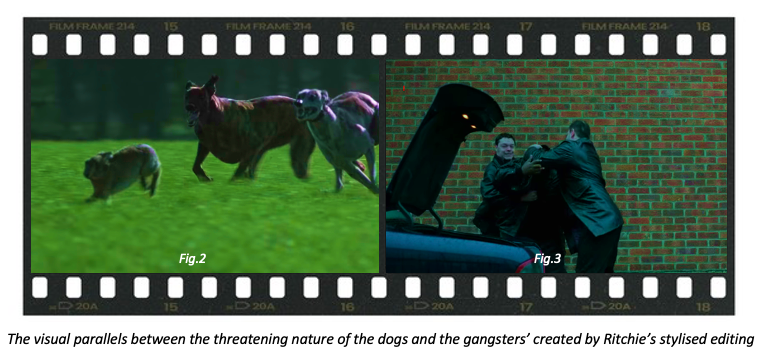
The use of dogs in this scene alludes to ideas of predator vs. prey and a similar allusion is made clear in the gangster scene. Ritchie utilises a low camera angle when the gangsters are on screen (Fig.3), to create a sense of authority. By placing audiences below the gangsters’ eye line, looking up at them, they are characterised as intimidating and powerful. This is paired with a high-angle shot of Tyrone (Fig.4). This high-angle shot creates a power imbalance, diminishing Tyrone and making him appear weak and vulnerable. The cinematography here visually highlights the hierarchy of social standing within the human world, where the gangsters have control over chancers such as Tyrone.
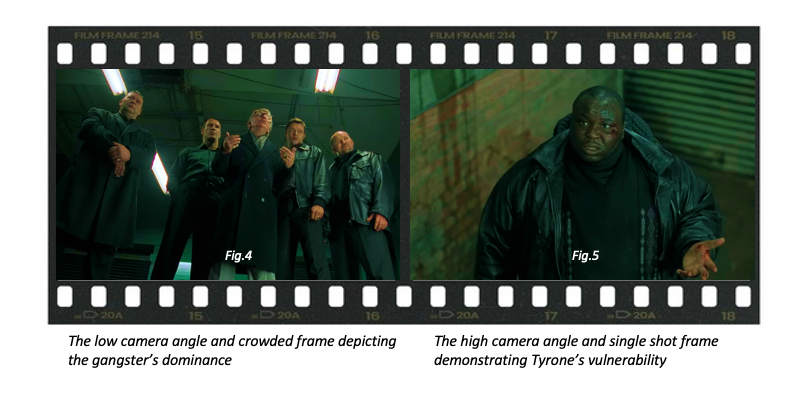
The hare chasing scene acts as symbolism to display the predator-prey relationship within the criminal world. Not only does the dogs’ animality reflect the gangsters’ vicious nature but the scene uses the comparison of animals and humans to demonstrate the survival instincts of the hunted and how animals and humans react similarly when placed in life and death situations.
While dogs are used to draw comparisons with the vicious gangsters, the hare is used to generate feelings of empathy within the scene.
The slow-motion camerawork on the hare highlights its slender body, agility and ability to escape, which is heightened by the mise-en-scene. The hare leaps throughout the open field and the colour palette is bright and green projecting an atmosphere of hope (Fig.5&6). This is further heightened by the camera angle. Guy Richie uses medium eye-level shots, placing us at eye-level and creating empathy with the hare as we root for it to escape the ruthless dogs.
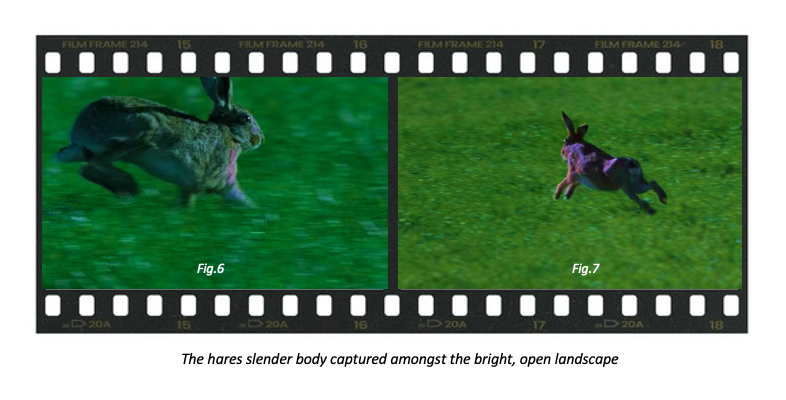
Here, Ritchie uses the hare to make us empathise with the natural world and witness a scenario where wildness can win and he contrasts this alongside the destruction taking place in the human world. By using a hare in this scene, Richie communicates the experience of animals and their ability to escape their predators. The hare manages to outwit the dogs through experience and survival instinct and whilst it is typical practice within the animal world to be hunted, this is not the case within the human world.
This animal experience is shown through the contrast of escape vs. capture. While the hare outruns the dogs, Tyrone is caught and tortured. Obscure camera angles and overhead shots are used to capture Tyrone enclosed in tight spaces where he is trapped and unable to escape and an atmosphere of hopelessness is generated through the dark and gloomy colour palette, whereas the hare bounds free in the green open space which displays freedom.
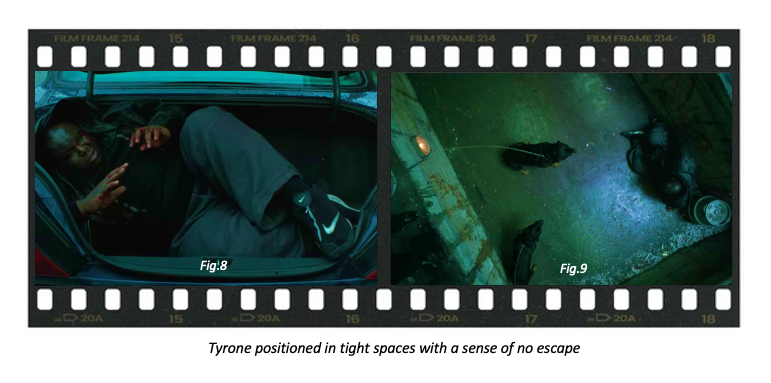
Ritchie chooses to use a vulnerable hare to generate this empathy across both plotlines while simultaneously commenting on the agility of animals in comparison with human clumsiness. In the film this contrast suggests the different motives behind ‘the chase’ in the animal vs. the human world. Whilst hunting in the human world is driven by an urge to control and dominate, in the animal world there is only one clear motive; to kill. This highlights the difference in intelligence between man vs. animal. Animals hunt to kill, eat to survive, this is determined by the simple hierarchy of the natural food chain, whereas the human hierarchy is far more complex driven by social standing.
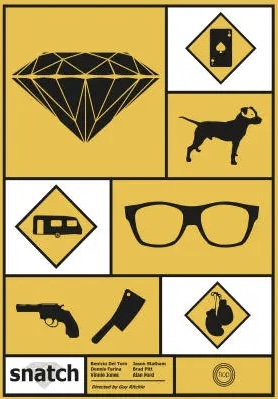
Fig. 10 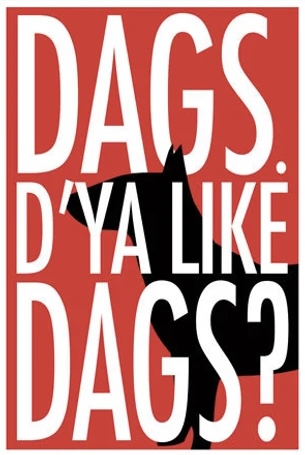
Fig. 11 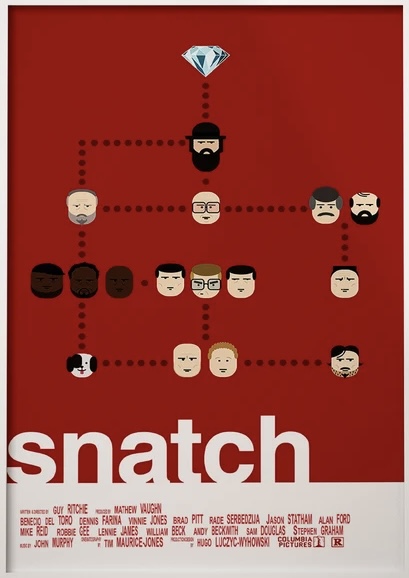
Fig. 12
Fig 10,11,12 – Infographics displaying the significance of dogs within the film and displaying the social hierarchy present within the human and gangster world